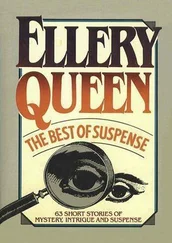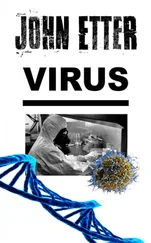The work of Loeffler and Frosch stimulated work on yellow fever, a terrifying human viral disease which had been the subject of intense debate in the 19th century between the contagionists and the anticontagionists ( 1). Yellow fever was at once a political and commercial battle as well as a scientific matter. The politically liberal anticontagionists were against quarantines and the bureaucratic apparatus that supported quarantines. The French Academy of Medicine weighed in on the issue in 1828 against yellow fever quarantines. Thus, the matter of disease transmission had political overtones as well as commercial consequences. Walter Reed, as director of the U.S. Army Yellow Fever Commission, would definitively demonstrate the mode of yellow fever transmission. William Welch, the dean of American pathology, pointed out to Reed the possible relevance of the work of Loeffler and Frosch on foot-and-mouth disease to the etiology of yellow fever ( 30).
Walter Reed and the Yellow Fever Commission
By 1900, several pieces of the puzzle were in place that would help to explain the spread of yellow fever. Of principal interest was the mode of transmission; the precedent had been set in 1897 with malaria when mosquitoes were identified as vectors. Walter Reed acknowledged “. . . the splendid work of Ross, Bignami, and others with regard to the propagation of malarial fever. . .” ( 30). Reed also acknowledged the work of J. C. Nott in 1848 in suggesting “. . . that the spread of yellow fever could not be assumed by the assumption of a diffusible miasm in the atmosphere but required the presence of an intermediate host. . . .” The specific mosquito, then called Stegomyia fasciata , later called Culex fasciatus and finally Aedes aegypti ( 19), had been identified by Carlos Finlay in 1886. However, Finlay had failed to convince his colleagues that this mosquito was responsible for disease spread. One of the principal reasons for that failure was ignorance of an extrinsic incubation period, a time during which the virus matures in the mosquito.
Reed recognized the careful work of Henry Rose Carter ( 8) ( Fig. 5) in two small towns in Mississippi in 1898, “‘demonstrating the interval between the infecting and secondary cases of yellow fever.’” Reed was gracious in declaring, “To Dr. Carlos J. Finlay, of Havana, must be given, however, full credit for the theory of the propagation of yellow fever by means of the mosquito” ( 30).
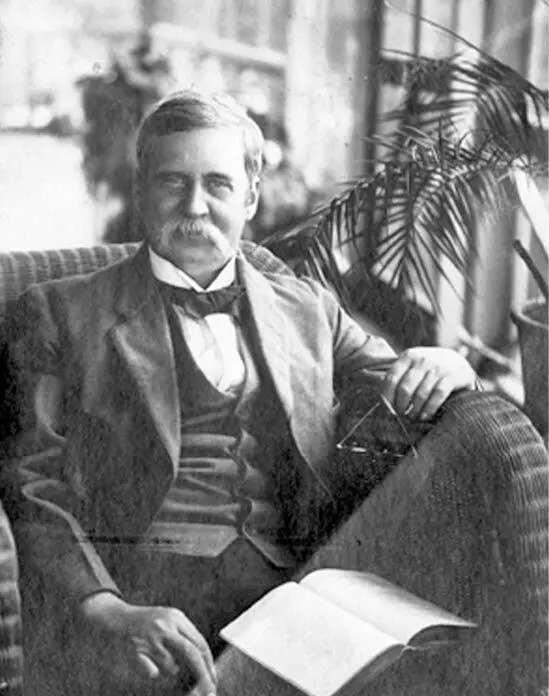
Figure 5Henry Rose Carter, 1909. As a member of the Marine Hospital Service, he was able to deduce a delay between primary and secondary cases of yellow fever. This extrinsic incubation period implied the need for another, nonhuman, host, later shown to be the mosquito. He was assigned to the Panama Canal Zone in 1904 to work on yellow fever. (Courtesy of Historical Collections & Services, Claude Moore Health Sciences Library, University of Virginia.)
doi:10.1128/9781555818586.ch1.f5
Sill missing was a crucial piece of the puzzle: isolation of an agreed-upon etiological agent of yellow fever. Although this was a time of exciting discoveries in medical bacteriology, credit in disproving putative bacterial causes must go to George Miller Sternberg, a pioneer American bacteriologist. An author of early American textbooks of bacteriology in the 1890s, he spent most of his career in the U.S. Army and was largely self-taught in bacteriology. In 1890, he published Report on the Etiology and Prevention of Yellow Fever , in which he thoroughly disposed of the several candidate bacteria as the cause of yellow fever ( 36). In 1897, Sternberg appointed Reed and James Carroll to investigate yet another candidate, Bacillus icteroides (Sanarelli) along with his own candidate, Bacillus X. Reed and Carroll, who were joined by Aristedes Agramonte in Cuba in 1898, demonstrated that Bacillus icteroides “bore no relation to the disease” ( 7).
In 1900, by-then Surgeon General Sternberg appointed Reed, Carroll, Agramonte, and Jesse W. Lazear to a board of army medical officers to investigate yellow fever in Cuba ( 7). The board first met 25 June 1900 ( 2). Astonishingly, within 4 months the board was able to report at the Annual Meeting of the American Public Health Association in October 1900 that Culex fasciatus served as the intermediate host for yellow fever ( 29). In clearing the field of bacterial contenders and in appointing the U.S. Army Yellow Fever Commission in 1900, Sternberg can be credited as the catalyst of these findings on the transmission and etiology of yellow fever ( Fig. 6).
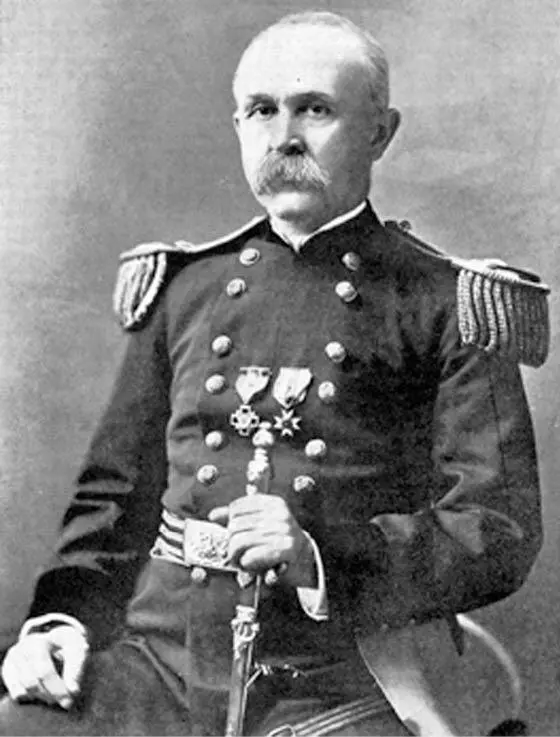
Figure 6George Miller Sternberg. Known as America’s first bacteriologist, he produced the first textbook of bacteriology in the United States. He was Surgeon General of the Army from 1893 to 1902, during which time he appointed the Yellow Fever Commission. (Courtesy of the Historical Collections & Services, Claude Moore Health Services Library, University of Virginia.)
doi:10.1128/9781555818586.ch1.f6
Without a bacterial agent identified in culture, the need remained to do studies in human subjects. The use of experimental animals was to come later ( 37, 38, 39). Finlay had already used human subjects in his earlier studies ( 14). Still, the investigators recognized the ethical implications of the studies in humans and offered themselves first. In James Carroll’s words, “Then arose the question of the tremendous responsibility involved in the use of human beings for experimental purposes. It was concluded that the results, if positive, would be sufficient justification of the undertaking. It was suggested that we subject ourselves to the same risk, and this suggestion was accepted by Dr. Reed and Dr. Lazear” ( 7). Carroll became the first experimental subject, accepting the risks ahead of other volunteers.
The circumstances to further study yellow fever were propitious. Following the Spanish-American War, yellow fever appeared yet again in Cuba, placing the populace and American troops at risk. Soon after arrival in Cuba, Reed and his Commission colleague, Agramonte ( Fig. 7), visited an army barracks at Pinar del Rio where an outbreak was occurring. Observations made on that visit “. . . did not tend to strengthen one’s belief in the theory of the propagation of yellow fever by fomites” ( 30). A curious story was told of that visit. Only one of nine prisoners, well guarded in jail, had come down with yellow fever. Speculation was raised that an insect such as a mosquito had bitten the one prisoner. That speculation was buttressed by the observations of Carter of the interval between infecting and secondary cases ( 9, 21). It was decided to test Finlay’s theory of mosquito transmission of yellow fever.
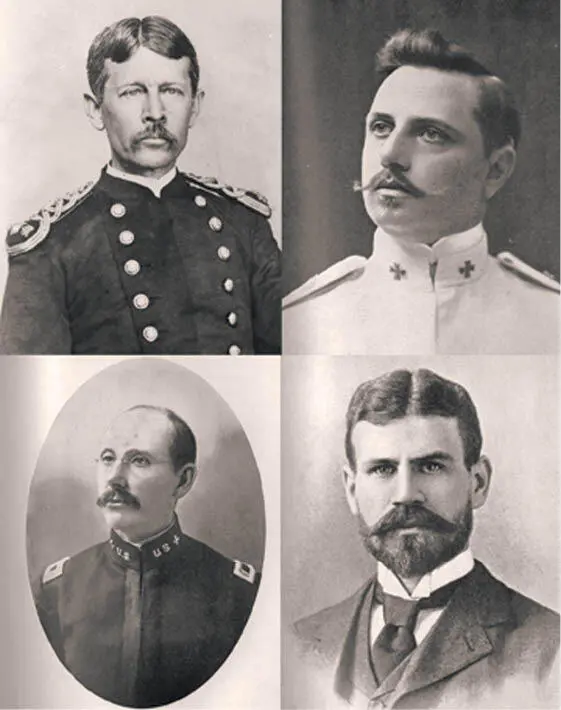
Figure 7The Yellow Fever Commission consisted of (upper left) Walter Reed, who led the Commission; (lower left) James Carroll, who performed the filtration experiment; (upper right) Aristides Agramonte; and (lower right) Jesse W. Lazear, who became infected in the course of the experiments and died. In a remarkably brief period of time at the turn of the 20th century, the Commission under Reed demonstrated that the disease was transmitted by mosquitoes and that it could be transmitted by filtered blood and thus was caused by a virus. (Courtesy of the Historical Collections & Services, Claude Moore Health Sciences Library, University of Virginia, except for the image of Walter Reed, courtesy of The National Library of Medicine.)
Читать дальше




